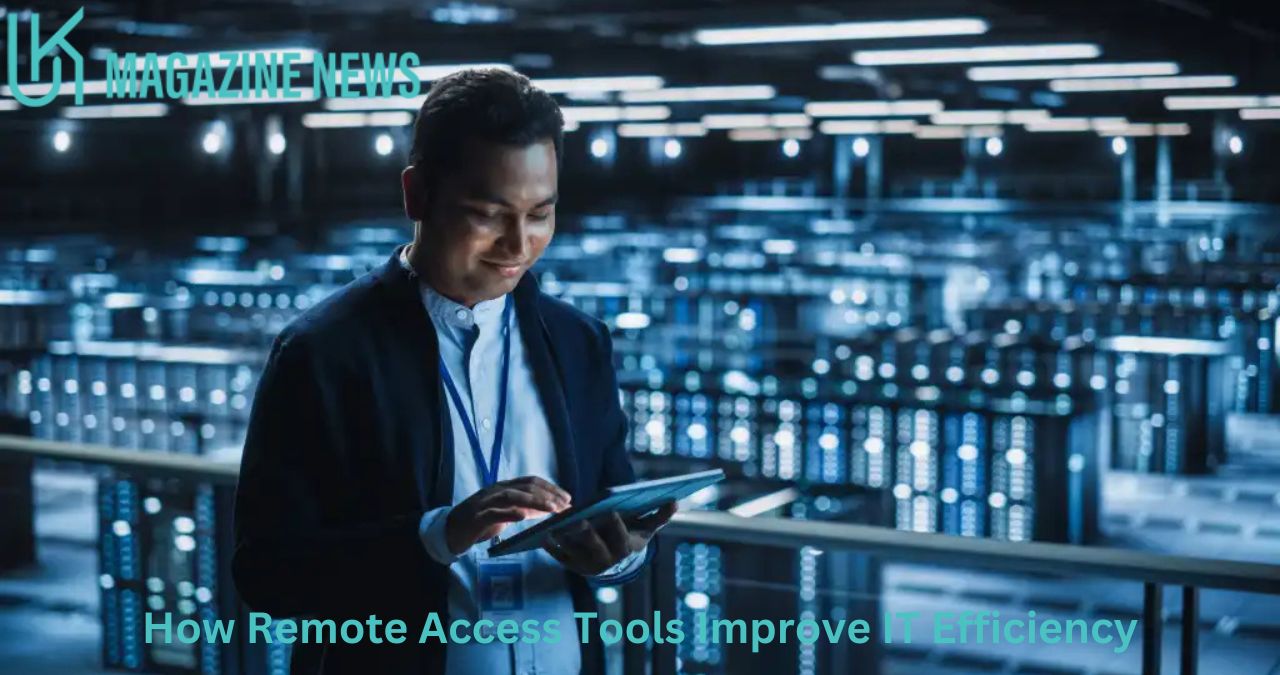In today’s fast-paced digital landscape, the demand for immediate, seamless access to resources and systems is critical for maintaining business operations. Remote access tools have become indispensable in improving IT efficiency, allowing IT professionals to manage, troubleshoot, and maintain systems from virtually anywhere. As more companies embrace remote work models, these tools are no longer a luxury but a necessity. This article explores how remote access tools enhance IT efficiency, reduce downtime, cut costs, and ensure better productivity across the board.
Reduced Downtime with Immediate Access
One of the most significant ways remote access tools improve IT efficiency is by reducing downtime. In a traditional setup, IT professionals often had to be physically present to resolve issues. This could result in extended system downtimes, especially if the problem occurred outside of regular working hours or at locations far from the IT team’s base.
Remote access tools enable IT staff to address issues as soon as they arise, regardless of their physical location. This rapid response reduces downtime and ensures that systems are restored quickly, minimizing the impact on business operations. For businesses, this means fewer disruptions, better customer service, and a more stable IT environment.
Platforms like logmein123 are a prime example of how remote access tools allow IT teams to securely connect to a device and troubleshoot from afar. It not only reduces the time to fix problems but also improves overall efficiency by allowing simultaneous monitoring and problem resolution.
Cost Efficiency and Resource Optimization
Remote access tools significantly cut operational costs by reducing the need for on-site visits. Traditionally, IT departments would need to send staff to various locations to perform maintenance, troubleshooting, or installations. Travel expenses, employee time, and physical presence all added to the cost. With remote access, IT personnel can perform these tasks from anywhere, eliminating the need for costly travel.
Additionally, it helps businesses optimize their resources. IT teams can monitor multiple systems and locations simultaneously, improving overall efficiency. This optimization allows companies to allocate their IT staff more effectively, focusing on larger strategic initiatives rather than being bogged down by small on-site issues.
Improved IT Support and Customer Service
With remote access tools, IT professionals can provide better support for end-users. Instead of lengthy troubleshooting over the phone, IT staff can directly access a user’s system, identify the problem, and resolve it in real-time. This hands-on approach improves the speed and quality of IT support, leading to higher customer satisfaction.
Moreover, some tools integrate features like screen sharing and file transfers, which make the resolution process more efficient. For instance, IT professionals can remotely walk users through complex processes, ensuring the problem is resolved while simultaneously educating the user. This proactive support minimizes the chance of recurring issues and ensures that end-users feel supported and empowered.
Enhanced Security and Control
While security is often a concern with remote access, modern tools come equipped with advanced security features like encryption, multi-factor authentication, and secure tunneling. These features ensure that only authorized personnel can access systems remotely, thus minimizing the risk of data breaches or unauthorized access.
By utilizing secure remote access platforms such as tvpromise.com, businesses can safeguard their networks while allowing IT teams to monitor and control access to sensitive systems and information. It offers a comprehensive view of the organization’s security landscape, allowing IT teams to detect and respond to threats in real-time, even when off-site.
Increased Productivity and Flexibility
One of the most obvious benefits of remote access tools is the flexibility they offer. IT professionals no longer need to be physically present to perform routine maintenance or emergency troubleshooting. This flexibility not only improves work-life balance for IT staff but also increases productivity.
IT teams can prioritize and address multiple issues across various locations simultaneously, without the constraints of travel or physical presence. This agility is especially valuable for organizations with distributed teams, multiple locations, or remote employees, allowing them to maintain a high level of service no matter where their IT staff are located.
Proactive Maintenance and Monitoring
Remote access tools are not just about fixing problems as they arise—they also enable proactive monitoring and maintenance. Many tools offer features that allow IT teams to track system performance, monitor for potential issues, and take preventive measures before a minor issue turns into a major problem. This proactive approach helps businesses avoid downtime, extend the life of their systems, and ensure that all devices are running at optimal levels.
Automated alerts and real-time reporting can notify IT staff of unusual activity, allowing them to respond before end-users even notice a problem. This kind of proactive maintenance is critical for ensuring business continuity and avoiding costly disruptions.
Scalability for Growing Businesses
As businesses grow and expand, their IT needs become more complex. Remote access tools are highly scalable, making them an ideal solution for growing companies. Whether a business is adding new locations, increasing its number of remote employees, or upgrading its IT infrastructure, remote access tools can easily scale to meet the demand.
Furthermore, the ability to provide consistent support across a growing number of devices and locations allows businesses to maintain efficiency without significantly increasing their IT headcount. This scalability helps organizations control costs while ensuring they have the necessary IT infrastructure to support their expansion.
Conclusion
Remote access tools have revolutionized the way IT departments function. By reducing downtime, cutting costs, improving customer service, enhancing security, and offering scalability, it has become essential for modern businesses. In an era where flexibility and efficiency are paramount, adopting remote access solutions like LogMeIn123 and TVPromise ensures that IT teams can maintain and support complex systems from virtually anywhere, leading to a more efficient and productive organization.
For companies seeking to improve their IT operations, investing in the right remote access tools is no longer optional—it’s a critical step in staying competitive in the modern business landscape.





